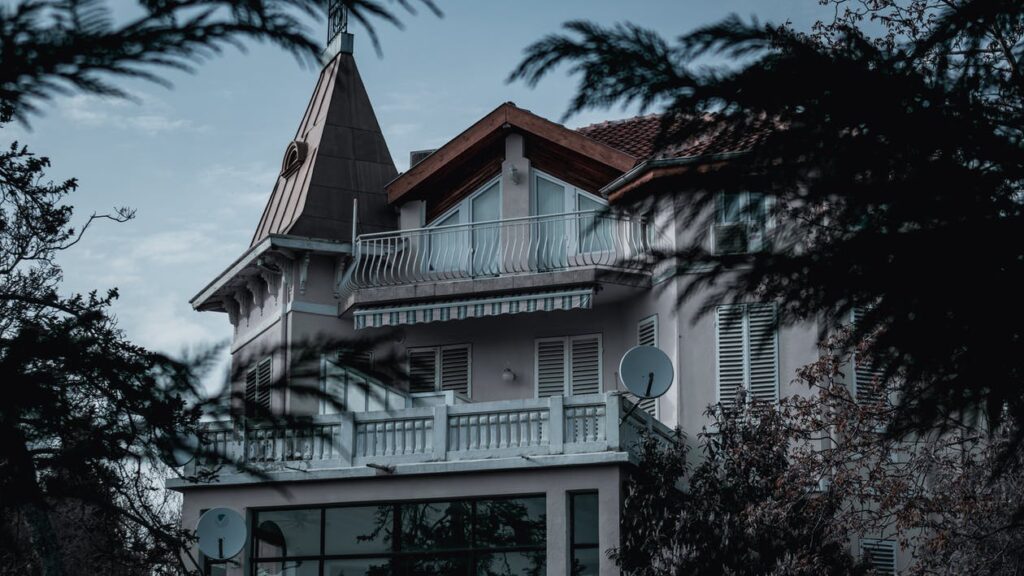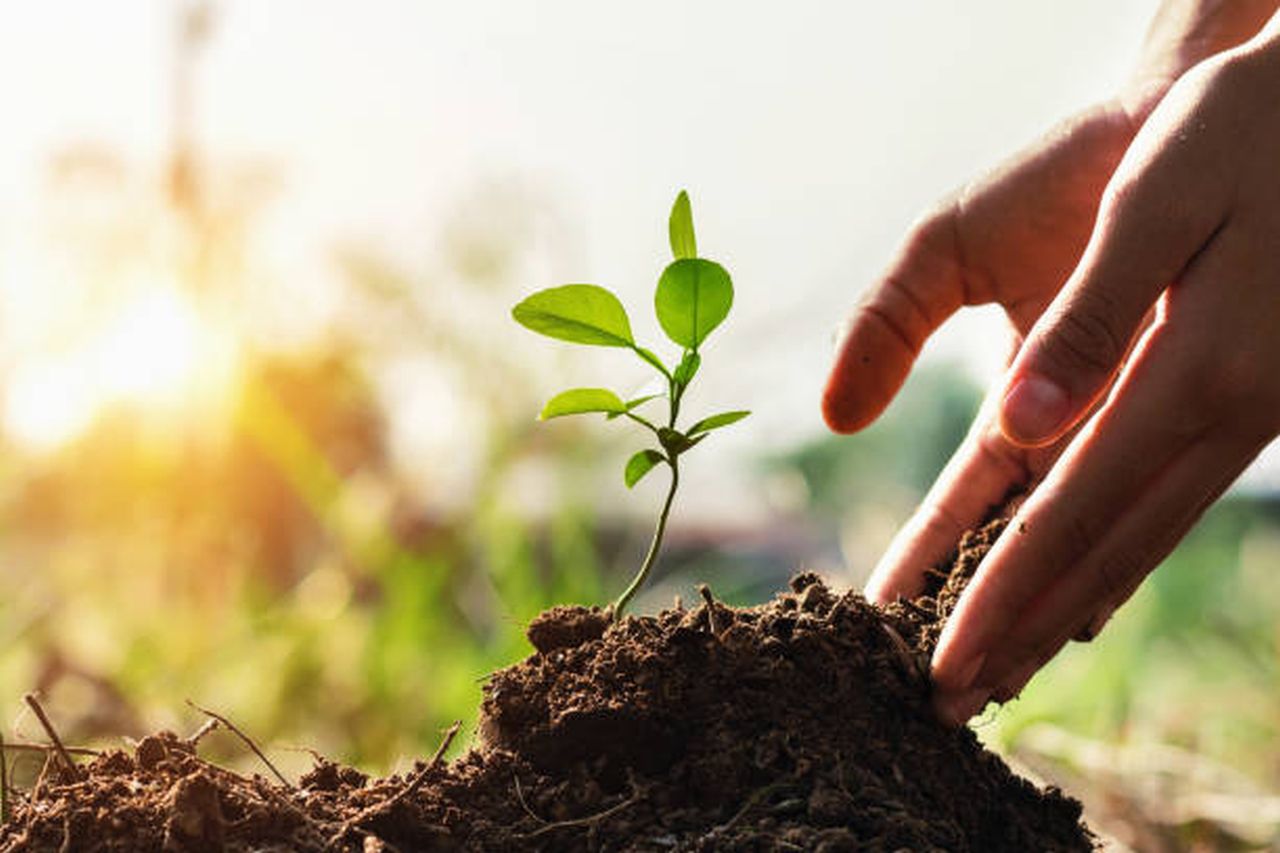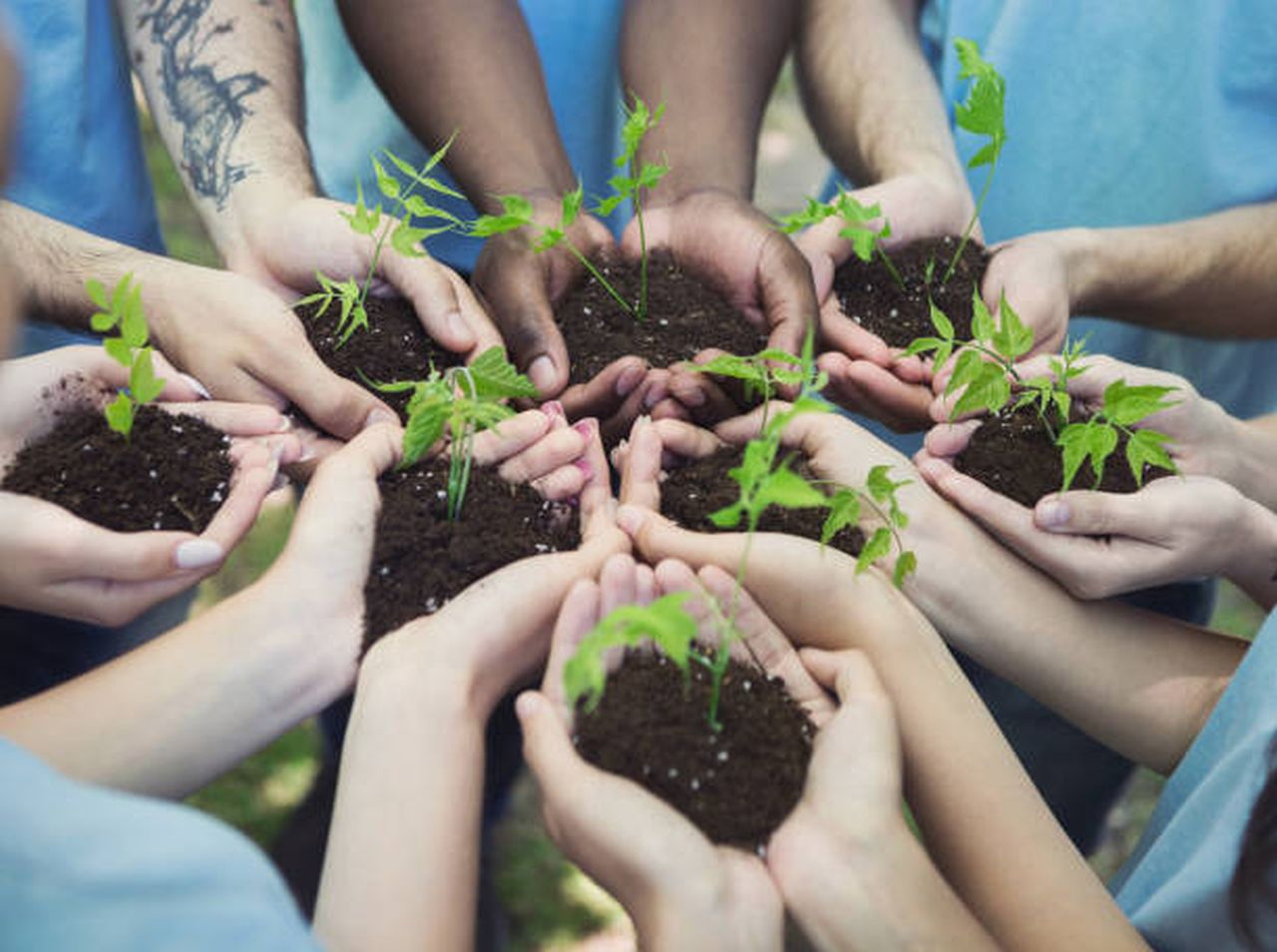Plant your seedlings as soon as you get them to increase their chances of survival. Keep the seedlings you just bought in the fridge or a dark, cool place until you're ready to plant them. Open the bag & mist the roots occasionally if you need to keep your seedlings in storage for longer than a few days. When storing trees, make sure the soil isn't soggy or the roots are drenched.
As soon as spring arrives, start planting your seedlings. It is recommended that tree planting in New Hampshire take place between the end of frost risk and the end of May.
The soil is moist, the weather is moderate, and the newly planted trees are dormant, making this time of year perfect for tree planting. Planting in the late summer or autumn can lead to increased seedling mortality than planting in the spring.
The optimal time of year for this activity often falls between the middle of August and the end of October. Waiting until the next spring is typically a wise decision if the weather is dry.
When deciding where to plant trees and shrubs, it is important to take into account their specific soil and light needs. All plants thrive best in full light and on well-drained, fertile soils. However, it is not always easy to locate such settings, and sometimes concessions are necessary.
However, trees can only adjust to their environment so much. If the land is too dry inside the summer or too wet in the spring, you should not plant there. UNH Cooperative Extension provides additional resources for deciding where to plant trees and what kinds to plant.
Seedling Types
Various factors, including tree species, seedling size, and number, influence the best planting strategy. Seedlings can be purchased either bare root or in a pot. Over the course of several years, seedlings were grown in nursery beds, then uprooted, packaged, and shipped without any dirt still attached to them.
Both the length of time a bare rootstock spent in the nursery as well as whether or when it was moved to a new nursery bed for growth can affect its maturity and size. Numbers like "3-0" and "3-2" indicate the maturity and transfer history of the bare-root stock used to grow the plant. A 3-0 seedling is one that has spent all three of its formative years in a nursery, while a 3-2 seedling is one that has been "transplanted" after five years. After three years in the same bed, it is transplanted and given another two years to mature before being lifted.
- Seedling with No Soil Yet
- Planting a Seedling Without its Pot
- Tumbling
Greenhouse-grown containerized seedlings, also known as tubings, are nurtured in specialised plastic or paper containers. Root systems of seedlings are typically grown in plastic trays with as many as a hundred individual tubes. In order to harden off, tubings spend one season inside the glasshouse before being transplanted outside. They are usually the same size as 3-0 bare-root stock because they are cultivated in a glasshouse.
Planting Instructions
Bare-root seedlings can be planted by hand in one of two ways: either in a hole or a slit. The first step in the process is to dig a trench with such a shovel or even a mattock that is big enough to hold the plant's root system.
Spread the roots as much as you can in the hole, then fill it in only to their collars. It's common practice to use a shovel and a hole to plant a few seedlings at a time.
Use a planting bar, spade, or mattock to make a slit in the dirt before planting. Use a rocking motion and a twisting motion to create a V-shaped opening in the soil. The roots of the seedling are inserted into the slit, and the earth is pushed back firmly around them using one's foot.
When using the hole or slit approach, it is essential to place the root collar at the soil level and to harden the soil surrounding the roots. You can tell what the soil line was like before you lifted the tree at the nursery by looking for a change in the bark's texture and colour at what is called the root collar.
Too much soil can prevent oxygen from reaching young plants' roots. Some of the roots could dry out if they were planted too shallow. The same thing can happen to roots if air pockets form around them owing to poorly constructed soil.
You should tightly pack the earth around the seedling's roots so that a hard tug is required to remove it. Spread the roots out as far as possible by planting bare-root seedlings. Try not to make the roots twist in a J form.
This is common when planting holes are too shallow for the roots. Roots that are tangled with one another or that are left exposed above ground can potentially cause harm to young seedlings. If the root ball is too big for the planting hole, remove a few of the root tips.
Planting Bar Technique
- Planting bar must be inserted at the indicated angle and then pushed forwards to the upright.
- You can plant a seedling at the proper depth by removing the planting bar.
- Two inches away from a young plant, insert the planting bar.
- Simply by pulling the planting bar's handle, you can compact the soil around the roots.
- Forward pressure on the planting bar's handle compacts soil over the tops of roots.
- Stamp your heel down into the final hole to fill it.
- Press down firmly around the seedling's feet to firm the dirt.
A dibble is needed to plant tubers. The roots of tubers are still enclosed in the potted soil in which they grew after being removed from the container.
The tip of the dibble is shaped similarly to the enclosed root system within the tubing. After the tool and tube have been forced straight into the ground, the earth is compacted using foot pressure.
It's crucial to water tree seedlings frequently after planting to ensure healthy root growth. Just take 50-100 trees out at a time and lug them over there.
Wrap the root systems in moist burlap or peat moss or store them in a container containing just enough water to completely cover the roots to limit their exposure to air and light. During the planting operation itself, you should work as quickly as possible to limit root exposure.
Frequently Asked Questions About Tree
The scientific study of trees is called dendrology. Trees and plants are identified by many characteristics including bark, flowers, fruits and seeds, buds, and twig traits. One of the easiest ways to identify a tree is by examining its leaves.
Afforestation is the process of introducing trees and tree seedlings to an area that has previously not been forested. Afforestation can be done through tree planting and seeding, naturally or artificially. Similarly, reforestation can be considered a form of afforestation.
Arborists are often called tree surgeons because their business bears a resemblance to how a doctor works on people.
When not scaling trees, NDNS members are busy doing “guerilla gardening” — planting hardy local tree varieties like neem, babul and jamun wherever possible and often without permission. Their mission to cure tree blindness continues.
The most common job of a professional tree climber is as a working arborist or tree doctor. These guys and gals climb hazardous trees, making the world above our heads a little safer. They are also credited with doing great work in helping to take care of our urban trees.
Planting And Caring For Trees
Shade, colour, structure, and vertical appeal are just a few of the numerous features that trees add to outdoor spaces. In addition to the obvious benefits of not cutting down trees, there are other environmental benefits associated with tree planting and care. They scrub the atmosphere, exchanging carbon dioxide for oxygen.
There Are Three Ways To Purchase Trees And Bushes.
Bare-root plants are a cost-effective option if you're shopping for plants in the late fall or early spring. This dormant vegetation are barebones, meaning they do not feature any sort of planter or soil.
Balled-and-burlapped (B&B) plants, on the other hand, have soil but no containers. Trees and bushes of any size are usually B&B from spring through fall. However, trees and plants typically come in pots.
Plants grown in containers are the most practical because they can be purchased year-round and come in many shapes and sizes. Don't buy a tree if the trunk has obvious damage like gouges, scrapes, or wounds.
To Plant A Tree:
Create a hole with a diameter and depth adequate for the root ball, then mound the excavated soil on a tarp. Burlap can stay in place while the tree is being placed, but it should be removed before the hole is filled.
After re-filling the hole by half, water the tree again. Then, create a ring of mulch all around the plant that is two to three inches thick to keep it safe from lawnmowers and to help it retain moisture. Tree wrap can then be used to shield young trees from rodents and the sun.
Secure Your Tree
For the straightest possible growth, you may want to stake your young plants, especially your B&B trees. Remove the stakes after two years to allow the trees to mature and strengthen themselves through the formation of trunks and root systems.
A stake around the same height as the tree is sufficient for supporting a sapling. Then, once you've located one, drive it inches into the ground, keeping it about 6 inches back first from the planting hole. Heavy wire and a softer material, like a cut piece of old garden hose, are used to secure the sapling to the stake.
As a result of the hose, the tree won't be harmed by accidentally brushing across the wire. Wrap the components together in a figure 8 pattern, taking care that they are not too snug; the trunk should still give slightly when pushed in any direction.
Nurture
Fertiliser isn't necessary for shrubs and trees unless the soil is of poor quality. A safe way to give young trees a head start is to treat them with a kelp and mycorrhiza growth solution. One to two inches of water each week is ideal for young trees and bushes.
Once established, trees and bushes require only occasional watering during dry spells and ongoing pruning to remain healthy. Dead or diseased branches, along with any branches that are rubbing against one another, should be cut off using pruning shears disinfected with bleach or rubbing alcohol.
Tree Planting From Seeds
What you'll need is listed below.
- Seeds for any tree you choose.
- A Pail
- Water
- Fertiliser
- Soil
- One With a Shovel
- Mulch
- recycled PET bottles of water (or comparably sized containers)
- Use either scissors or even a razor to cut the paper.
Germination Of Seeds
The stage at which dormant seeds begin to germinate and develop into new plants. It's the first rung on the ladder to maturity for your tree grove.
- Please add water to the bucket.
- Get the seeds nice and soaked until they start to protrude. Soaking times range from 6 hours to 24 hours, depending on the tree species you're cultivating.
Make a mental note to read up on the species of tree you intend to cultivate. Some plant species require several days or weeks of germination time before they may be planted.
Make Potting Mix And Individual Containers For The Seedlings
Prepare the pots and potting soil you'll use to grow your seedlings in while you wait for the seeds to sprout (this is where your plastic bottles will come in handy).
- To make a plastic jar, remove the bottle caps. Keep the bases of the bottles whole so they can be displayed vertically.
- Mix soil and fertiliser to create a potting mix. Farm animal dung is Frederick's prefered form of fertiliser, however if you can't get your hands on any, commercially produced fertiliser will do just fine.
- Leave 1-2 inches of headspace in each bottle after filling with potting soil.
Fill The Containers With Sprouting Seeds.
Time you "re-pot" your sprouting seeds into the containers you've already prepared.
- Start by poking a gap in the centre of the potting soil with your finger.
- Put one or two seeds of anything that can grow from the ground in the hole, and then fill it in with soil.
- Soak the soil just enough to keep the seedling moist.
- Proceed until all of the seeds have been planted.
- Put about an inch of mulch on top of the containers.
Before you put your seeds, they should be visible sprouting. They haven't grown long enough if they aren't sprouting.
Grow Your Seedlings
Students at Primary School tend a nursery they affectionately refer to as the "baby tree incubator" to nurture seedlings. The stone shed has no roof, so the seedlings have enough of light and protection from the wind, and they may take advantage of Iguana's pleasant weather all year long.
If you live in a cooler climate or are starting your seeds off in the winter, you may want to utilise a room in your residence that stays warm and gets a lot of sunlight as an incubator for your young trees.
- Put the young plants in their pots in a sunny area of your nursery.
- Daily watering is required.
- Wait.
- Hold on a second.
A side note: We forgot to ask him how long he typically kept his seeds in the baby trees incubator before planting them. Water them every day until they're huge, he advised, then top dress with mulch as needed. Don't rush your seedlings, as different trees grow at varying rates. The minimum amount of time you should anticipate to keep your nursery operational is one month.
Sow Your Seedlings
Your seedlings are ready to go outside and meet the world when they reach a height of 3 to 4 inches (and the weather is beautiful and warm).
- Dig a hole in the dirt where you wish to plant your tree to use a shovel or hoe.
- Cutting the plastic bottle free from the sapling with scissors or a small knife should be done cautiously to avoid harming the roots.
- Take the sapling out by peeling off the plastic bottle.
- Plastic trash should be recycled.
- Fill in the hole around the sapling's roots until it is capable of standing on its own.
- As a mulch, Frederick employs grasses, maize bran, and rice bran.
The hole should be just the right depth; the tops of the root of your sapling ought to be barely below the surface.
Water Daily
What's the final phase? As long as you remember to give your plant some water every day, it will flourish into a tree that will provide you with shade.
Obviously, if it rains, your tree won't require you to water it. However, daily watering is required if you live inside a dry environment like Igunga. Don't let the summer heat put you off from uncoiling your garden hose.
Because there is no running water at Primary, every kid brings a five-litre jug of water at home to water the trees on campus. Day after day.
9 Motives To Plant A Tree
Did you know that planting a tree is among the simplest and most effective ways to help the planet? Yes, actually. Trees provide several benefits, including lowering energy costs, reducing pollution levels, and even slowing climate change. Also, they're quite easy to put in the ground. A background in gardening is not necessary.
People all over the country are planting trees, from the single mother who plants a maple in her backyard to a 250 Comcast employees who participate in Comcast Cares Day, the biggest single corporate volunteer event in the country, to plant hundreds of trees in communities devastation caused by hurricanes, fires, and the Emerald Ash Borer infestation. give you nine good reasons to sign up with them.
- Want to do more than just recycle and lower your carbon footprint in the fight against climate change? Plant a tree. Protection from the elements is provided by the trees. Trees remove and store dangerous carbon dioxide through photosynthesis, while also oxidising back into the air.
- Trees do more than just soak up CO2 to make the air we breathe healthier. They are effective at soaking up noxious gases like NOx, AMNOx, SO2, and O3. In exchange for producing 260 pounds of oxygen, it is believed that a single tree can take in roughly 10 pounds of dirty air annually.
- Soil erosion and water runoff are two problems that can be mitigated by planting trees; without them, floods could occur as rainwater washes into rivers, lakes, and wetland areas. Along the route, it gathers up and carries various pollutants. The Environmental Protection Agency as well as the Center for Groundwater Protection have both acknowledged the use of trees in storm water management. The soil is held in place by the roots of the plants, and the leaf canopies act as a sponge to slow the rain's impact on the ground and help it soak into the ground instead of flow off.
- It's simple to plant trees: Due to the complexity of the gardening process, beginners may feel overwhelmed. How close should you place certain flowers and plants together, and which ones should you keep at arm's length? Which ones are summer flowers and which are October ones? It doesn't exist in the case of trees. Simply pick a location in your backyard, and you'll all set.
- Trees reduce heating and cooling costs by blocking the sun in the summer and the wind in the winter, respectively. Since trees act as a natural windbreak, you can use less money on heating and cooling your home during extreme weather.
- Comparative studies of houses with and without yards full of trees suggest that houses with trees in the yard are worth up to 15 percent more than their treeless counterparts. Trees enhance the aesthetic value of a property and yard, which is of paramount importance.
- Birds and other wildlife will be drawn to your yard because trees offer them a place to nest, food, and cover. Put up a bird feeder in a nearby tree and listen to the birds all year. Squirrels, like many other species of wildlife, find treetops to be ideal for roosting and nesting, and watching them go about their daily antics makes for a delightful summertime activity.
- The presence of trees within urban settings has been shown to decrease stress, anxiety, and even crime. Patients recover more quickly when they are surrounded by healing trees in hospital gardens.
- Trees may survive for hundreds of years, so that when we plant one, you're actually leaving a legacy for future generations. For generations to come, it will serve as a reminder of your dedication to protecting the planet and appreciating its splendour.
Conclusion
Before planting, make sure your seedlings are kept cold and dark. Seedling mortality is higher if you plant in the late summer or fall. Planning where and what trees to plant can be aided by UNH Cooperative Extension. A nursery has nurtured a 3-0 seedling for all three of its formative years. Seedlings raised in a glasshouse are cultivated in pots made of plastic or paper.
Seedlings' root systems may expand into as many as a hundred separate tubes in plastic trays. Tubers, sold in containers of soil, need to be planted with a dibble. The soil is compacted with foot pressure once the tool and tube have been driven straight into the ground. Then, the trees can be removed in groups of 50-100 and transported in a single load. Here are some pointers on how to have your soil and plastic bottles ready for when your tree seedlings finally sprout in the garden (and sprout).
Content Summary
- Plant your seedlings as soon as you get them to increase their chances of survival.
- As soon as spring arrives, start planting your seedlings.
- Planting in the late summer or autumn can lead to increased seedling mortality than planting in the spring.
- When deciding where to plant trees and shrubs, it is important to consider their specific soil and light needs.
- UNH Cooperative Extension provides additional resources for deciding where to plant trees and what kinds to plant.
- Factors influencing the best planting strategy include tree species, seedling size, and number.
- A 3-0 seedling has spent all three of its formative years in a nursery, while a 3-2 seedling has been "transplanted" after five years.
- They are usually the same size as 3-0 bare-root stock because they are cultivated in a glasshouse.
- Bare-root seedlings can be planted by hand in one of two ways: in a hole or a slit.
- It's common practice to use a shovel and a hole to plant a few seedlings at a time.
- This is common when planting holes are too shallow for the roots.
- Remove a few root tips if the root ball is too big for the planting hole.
- Removing the planting bar can plant a seedling at the proper depth.
- Two inches away from a young plant, insert the planting bar.
- Simply by pulling the planting bar's handle, you can compact the soil around the roots.
- A dibble is needed to plant tubers.
- It's crucial to water tree seedlings frequently after planting to ensure healthy root growth.
- In addition to the obvious benefits of not cutting down trees, there are other environmental benefits associated with tree planting and care.
- Bare-root plants are cost-effective if you're shopping for plants in the late fall or early spring.
- Don't buy a tree if the trunk has obvious damage, like gouges, scrapes, or wounds.
- After re-filling the hole by half, water the tree again.
- Tree wrap can then shield young trees from rodents and the sun.
- You may want to stake your young plants, especially your B&B trees, for the straightest possible growth.
- Remove the stakes after two years to allow the trees to mature and strengthen themselves through the formation of trunks and root systems.
- A stake around the same height as the tree is sufficient for supporting a sapling.
- Fertiliser is only necessary for shrubs and trees if the soil is of poor quality.
- Treating young trees with a kelp and mycorrhiza growth solution is a safe way to give them a head start.
- One to two inches of water each week is ideal for young trees and bushes.
- Germination Of Seeds The stage at which dormant seeds begin germinating and developing into new plants.
- It's your tree grove's first rung on the ladder to maturity.
- Prepare the pots and potting soil you'll use to grow your seedlings while you wait for the seeds to sprout (this is where your plastic bottles will come in handy).
- To make a plastic jar, remove the bottle caps.
- Mix soil and fertiliser to create a potting mix.
- When you "re-pot" your sprouting seeds into the containers you've already prepared.
- Start by poking a gap in the centre of the potting soil with your finger.
- Put one or two seeds of anything that can grow from the ground in the hole, then fill it with soil.
- Soak the soil just enough to keep the seedling moist.
- Proceed until all of the seeds have been planted.




